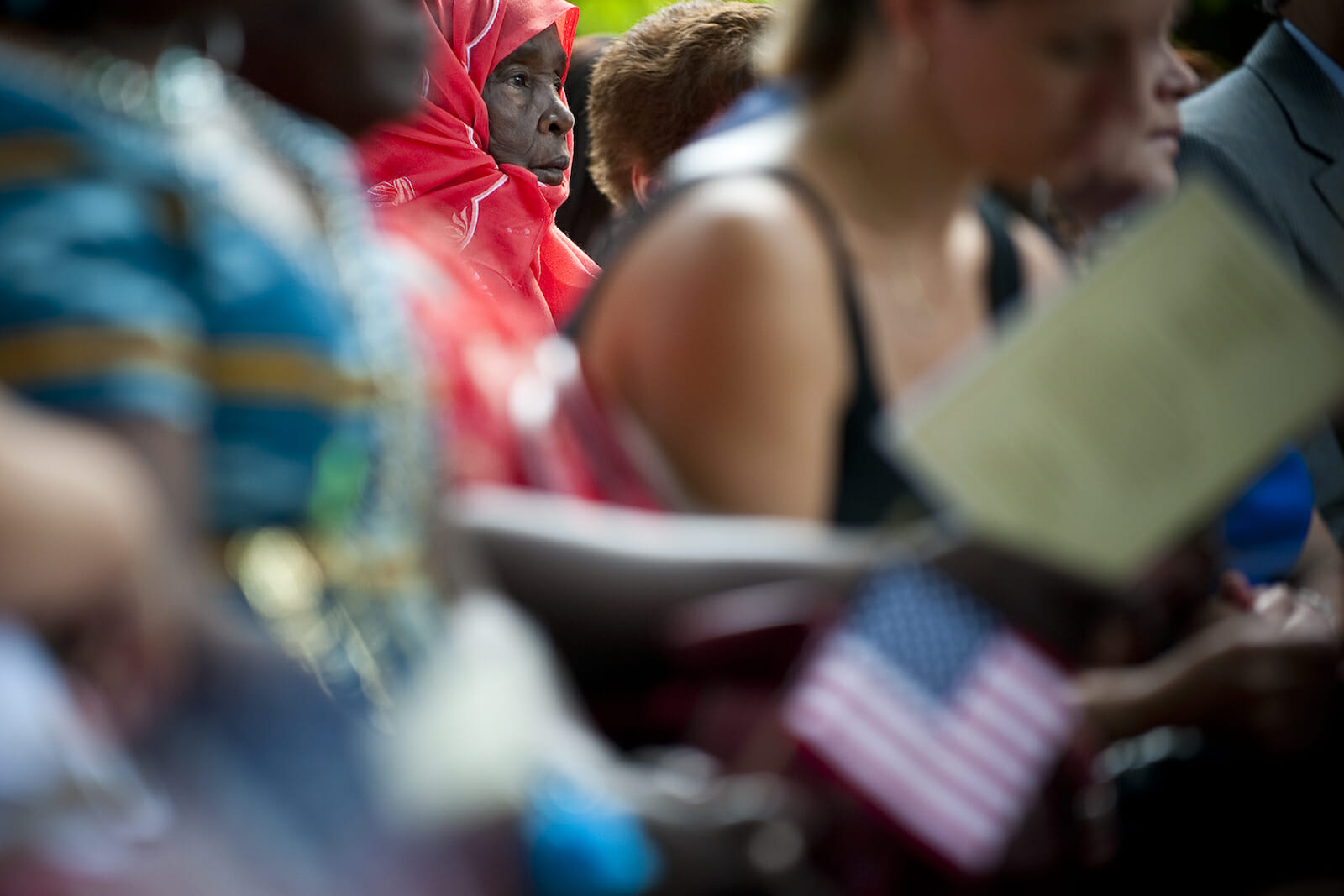
Reforming the American Citizenship Process
Emma Lazarus wouldn’t be very proud of the current state of America’s citizenship program and immigration stance. If you’re not familiar with Emma, she wrote the poem inscribed at the base of the Statue of Liberty. It’s called “The New Colossus.”
The poem is a paean to the United States as a haven for wandering souls. Its most quoted line — “give me your tired, your poor, your huddled masses yearning to breathe free” — promises refugees a fair chance in what was once the New World. Today, that sentiment has changed.
Immigration to the United States is harder now than it has ever been and recent Conservative policy sends a message very different from the words Lazarus wrote so proudly. To keep intact the foundational idea of America as a safe place for all, we need to rethink the path to American Citizenship.
Why Do People Immigrate?
Many of those who arrive in the U.S. seeking citizenship are fleeing from unpleasant existences in their home countries. The difficult travels of migrants from Central American countries like El Salvador, Guatemala, Nicaragua and even Mexico have been well-documented.
Once these people arrive in the States, they have two means of earning “permanent resident status” — that is, a green card. The first is through family ties. The second is employment. So why do so many illegal immigrants not have their green cards?
Not as Simple as It Sounds
Before becoming a citizen, a person who wants to immigrate to the U.S. must spend three years in the country if they are married to an American citizen or five years if they are not. You must also be eighteen years old and reside in the same state or district for at least three months. After meeting these qualifications, you can begin the vetting process to become a citizen.
The first step for would-be citizens and the one so many illegals avoid is to get that green card. Green card holders are seen as lawful and permanent residents in the eyes of the government.
If you have a spouse, parent, child or sibling who lives in the States, you can apply for a green card and compete with applicants from around the world for the 25,000 spots allotted in a year. Countries with high numbers of applicants can see years-long wait times.
Finding a job in the U.S. depends on your skills. If you are someone with specialized skills, like a doctor, you’ll be prioritized for immigration. Naturally, there’s a large contingent of applicants seeking work that is not considered specialized. For them, the best bet is to seek a work visa. Some people also acquire permanent resident status by marrying a U.S. citizen.
While many Americans are quick to criticize the government’s approach to illegal immigration as lenient, few understand just what it takes to become a citizen. When people are fleeing dangerous or hostile conditions in their homelands, they often are faced with no other choice but to immigrate quickly just to seek refuge.
Between a Rock and a Hard Place
You can imagine what happens if an applicant doesn’t get good news when waiting for a green card. With nowhere to go, the person remains in the country as an illegal immigrant or is forced to flee to a nearby country only to attempt immigration again and risk deportation.
Assuming one does get a green card, that person still faces the challenge of staying in the country and holding a job for five years. Next, they need to pass an exam that can only be taken in English to achieve citizen status. This might sound simple to you, but it’s quite difficult if you didn’t speak a word of English before arriving in the United States.
The DREAM Act protected young people who were undocumented in the States during the Obama era. However, Donald Trump’s unified Republican administration dismantled that statute and chose to leave these would-be Americans once more vulnerable to deportation.
Inspiration from the Global Community
America has a long history of welcoming refugees and immigrants. We’ve long been secure in the understanding that the great benefits immigrants bring to our culture and our economy vastly outweigh any potential “threat” their being here might represent. Nevertheless, our status as a world leader in this arena is faltering as many other nations are now setting their own examples worth following.
New Zealand stands among the countries demonstrating how to provide support for refugees without creating an unsafe environment for existing citizens. 37% of people living in New Zealand’s capital of Auckland were born overseas.
Rather than setting unachievable work or relationship goals for migrants, New Zealand determines acceptance based on the endorsement of other citizens. Not just anyone can vouch for you, however. But if a prominent angel investor is willing to stake their name on it, and you’ve arranged plans for a job, the government will give you a chance.
Italy and Spain have also demonstrated impressive flexibility in the wake of the Greek economic collapse by allowing a rush of new refugees in despite predictable pushback from Conservatives in government.
A Legacy to Uphold
Should we pay heed to the concerns of those who worry that letting too many foreigners in could expose the nation to risk?
The answer is “yes” — adequate vetting is needed for new citizens. However, at the moment, the United States is still seen as an example by nations around the globe for how to do this properly. More U.S. citizens per year are hit by lightning than fall victim to the terrorist attacks Conservatives scaremonger about on television. And forcing people out will only harden feelings against the U.S.
As a nation, if our people feel that our existing citizenship process needs re-working, we can and should be discussing alternatives that aren’t isolationist, xenophobic nor ethnocentric.

